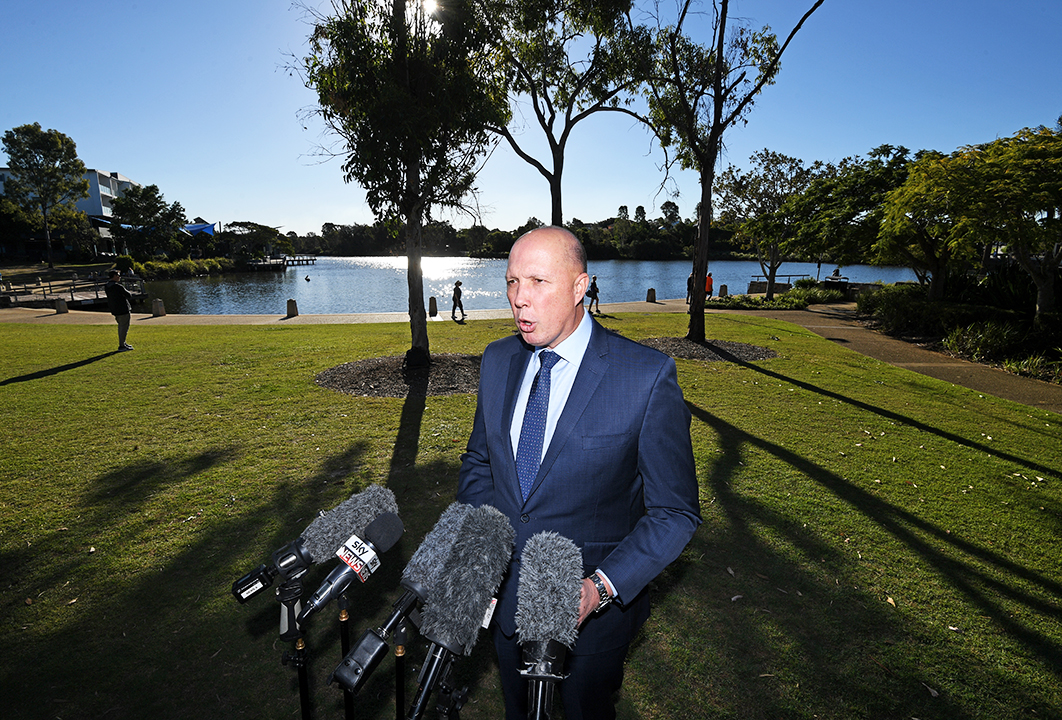After six years of pursuing a small-target strategy on immigration, Labor’s new shadow home affairs minister, Kristina Keneally, plans to go on the attack. Her potential targets are a veritable smorgasbord of failures in policy and administration within Peter Dutton’s home affairs department.
A good starting point is the extraordinary blow-out — to almost 230,000 — in the number of people living in Australia on bridging visas. These visas are issued when the department can’t keep up with demand in substantive visa categories, and reflect long processing times and a ballooning of certain categories of arrivals.
The record number of Chinese, Malaysian, Indian and now Vietnamese visitors seeking asylum is in particular need of scrutiny. People smugglers are flying vulnerable people in on visitor visas and then applying for asylum on their behalf in order to secure work rights. They are then made available to Australian employers, effectively as indentured labour. This is happening every day through major airports, yet home affairs minister Peter Dutton and his department continue to gaze out to sea.
Without an efficient visa system with high levels of integrity, any debate about improving the broader design of immigration policy is pointless.
Here, the questions Labor needs to pose are obvious. When will the multitude of visa-processing backlogs — not to mention the lengthening queue at the Administrative Appeals Tribunal — be reined in? When will government crack down on the people running the asylum scams out of Malaysia and China? How will all this be done given the projected decline in funding for visa processing? And how can the proposed privatisation of visa processing possibly help deal with this disaster?
The opposition also needs to expose the misleading population plan Scott Morrison issued in March this year. The plan talked of cutting permanent migration and sending more provisional migrants to the bush to “bust congestion.” Yet, just a few weeks later, the 2019 budget papers assumed a massive increase in population, fed by higher net migration and fertility.
The bulk of this population increase would need be driven by long-term temporary migration. The number of temporary entrants living in Australia would need to grow well beyond the current level of around two million to between three-and-a-half and four million in ten years. Inevitably, they will mainly settle in Sydney, Melbourne and Brisbane.
The government hasn’t explained how these extra migrants will be recruited and processed, or how faster population growth in the major cities will bust congestion. Will its infrastructure plans be big enough to accommodate the forecast surge in population? Have state premiers signed on to this massive population increase in major cities?
It’s more likely that a weakening labour market will bring a large fall in immigration, leaving the prime minister’s jobs creation and budget surplus plan in tatters. The jobs and small business department is already forecasting a 350,000 jobs shortfall in the growth of net employment, indicating that more people will need to take up second and third jobs for the prime minister’s promise to be met.
The list of problems goes on:
• It’s now clear that pure politics lay behind the government’s failure to take up New Zealand’s resettlement offer for refugees on Manus and Nauru. The opposition should intensify pressure on the government to resolve the predicament of the remaining refugees. The dubious and highly expensive single-source contracts for running the two offshore detention centres must also stop.
• On the mainland, most people in the legacy caseload of boat arrivals are living on temporary visas, their future uncertain. In the past both Coalition and Labor governments have regularised the status of people on such visas. Yet Peter Dutton appears to have no plans at all for their future.
• The department has been unilaterally limiting the number of spouse visas, despite the fact that parliament has twice voted (in 1989 and again in 1996–97) to deny it that power. Home affairs must be made to obey the law and process spouse visa applications according to the Migration Act.
• Home affairs must also adopt the Auditor-General’s recommendations on its tardy processing of citizenship applications. Did it have an unwritten policy of delaying granting citizenship to young people to prevent them voting in the recent election?
• The department needs to deal with the mounting risk to the reputation of our international education industry that comes from outsourcing student visa processing, especially in the higher-risk cases recently highlighted by the ABC’s Four Corners.
• The government needs to be pressured to act on the recommendations of its own taskforce on migrant worker exploitation. The problem will only worsen if the labour market weakens or if government proceeds with its risky new provisional visas.
Ham-fisted changes to temporary and permanent employer-sponsored migration have done little to reduce the risk of exploitation or protect lower-skilled Australian workers. Yet they have made it harder for Australian businesses to attract high-skilled workers from overseas. The costs and delays associated with processing these visas have deeply concerned employers and reputable migration agents.
Home affairs faces extraordinary challenges over the next three years, most of them a result of the decisions made by Peter Dutton and his departmental secretary, Mike Pezzullo. Survey data reveal that staff morale is declining rapidly, and the visa processing figures alone show that the department is increasingly dysfunctional. Labor’s challenge will be to show that the minister and his secretary are not the people to lead the department out of this mess. •




